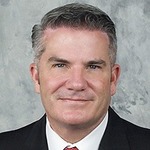Using Technology to Enhance Patient Care and Improve Efficiencies
by Brian O’Neill
 Healthcare providers and payers have intrinsically known for years the importance of effective communication to high-quality care. But, truth be told, the system hasn’t always worked as well as it should.
Healthcare providers and payers have intrinsically known for years the importance of effective communication to high-quality care. But, truth be told, the system hasn’t always worked as well as it should.
Primary care physicians have their challenges in communicating with specialists (including hospitalists). Physicians and nurses don’t always talk to each other as frequently as would be ideal. Patients don’t always do their part in asking for clarity when they don’t fully understand a diagnosis, medications, or hospital discharge instructions. Transition planning between hospital, social worker, and post-acute care facility often lacks the interaction needed to make the transition most effective. And health plans and physicians don’t always adequately communicate where case management issues and chronic care are concerned.
Electronic communication just may be the answer the industry has been seeking for decades. Linking together all participants in the health care process—physicians, payers, and patients—is fast becoming a necessity in regards to office efficiencies and responding to patient demands. Most important, electronic communication is making major inroads in improving patient care, enhancing patient satisfaction, and providing a winning strategy for those who embrace its potential.
This content is only available to members.
Please log in.
Not a member yet?
Start a free 7-day trial membership to get instant access.
Log in below to access this content:

